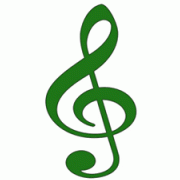Leaderboard
Popular Content
Showing content with the highest reputation on 04/05/2025 in Posts
-
Hi @Frank R., Welcome to the forum! Just like @PeterthePapercomPoser a.k.a. PaperthePetercomPoser and @pateceramics said, this piece reminds me of Vaughn Williams, and for me also the works of our fellow member @Alex Weidmann! Also, just like Peter and Maggie said it would be great to invite some contrasts in the piece, but for a piece under 4 minutes I am satisfied enough with the contrast here personally! I also love this combination of instruments, so airy and light which fit the style of the music! I notice that it's always the flute on top of the oboe! I think sometimes the oboe can be on top of the flute as well! Thx for joining and sharing! Henry2 points
-
As discussed in the discord channel, I would like to ask which one is your favourite Beethoven Symphony(ies)?1 point
-
This is a rock piece for many instruments. This is my original style and there isnt much inspiration from anything. It is structured kind of like a rhapsody. I'm 17 and still somewhat new to rock composition. I apologize for the bad sound quality this is just a draft and the final product will go through Ableton and onto an album.1 point
-
1 point
-
1 point
-
Organ Composition Competition.pdf Sitka Lutheran Church in Sitka, Alaska is enthused to invite young composers to submit organ works for a composition competition! This fall, Sitka Lutheran Church is celebrating the 30 year anniversary of its volunteer program. This program spreads faith, history, and love to Sitka visitors. As part of this celebration, a concert will be performed on its 1844 Kessler pipe organ, which is the oldest organ west of the Mississippi River. The winning composition will be premiered at this concert. Competition Eligibility and Guidelines · Open to students studying at American high schools, colleges, and universities. · Compositions must be 7-10 minutes in length and suitable for Sitka Lutheran’s 1844 Kessler organ. · Submissions must incorporate the melody Finlandia, by Jean Sibelius. · Composers are encouraged NOT to submit works in a theme and variations form. · Submissions must not require a pedalboard or more than 1 manual. · Submissions must be entirely original and not previously performed. · There is no application fee. Selection Criteria · Quality of the work. · Young composer’s potential. · How well the work reflects Sitka Lutheran’s volunteer program and Finnish heritage. Sitka Lutheran’s 1844 Kessler Organ · Small single manual, no pedalboard instrument. · Registration is: 8’ Gedeckt, 8’ Viola de Gamba, 4’ Principal, 4’ Flute, and 2’ Octave. · It does not have a split keyboard. · Further information about this instrument may be found at: https://pasiorgans.com/instruments/opus6art.html Timeline · Deadline for submitting Deliverables, described below: July 15, 2025 at 11:59 PM Central Time. · Notification of the winners: No later than September 1, 2025. · Concert where the new work will be premiered: October 16, 2025 in Sitka, Alaska. Deliverables Due by July 15, 2025 at 11:59 PM Central Time · Young composer’s name, email address, and telephone number. · Short statement of where the young composer is studying, program of study, and career goals. · PDF score of 7-10 minutes of organ music as described in the Competition Eligibility and Guidelines, above. · Link to a recording or a recording, if available. Piano is fine. · Any additional comments or information the composer wishes to share about the composition, with a maximum of 500 words. · Proof of high school/college/university study, such as copy of school identification card. · Short statement of where the young composer heard about this competition. · Deliverables must be emailed to SitkaLutheranCompetition@hotmail.com Prizes · One first place winner will receive a $1,000 cash prize. · One second place winner will receive a $300 cash prize. · The first place winner’s work will be premiered at the October 16, 2025 concert at Sitka Lutheran. · The second place winner’s work may be premiered at a later concert. · Participants are free to attend the concert, but unfortunately Sitka Lutheran Church is unable to provide airfare or lodging. Questions · Please email Deliverables and questions to SitkaLutheranCompetition@hotmail.com · Questions may also be texted to (907) 351-6591.1 point
-
My Neighbour Totoro is Miyazaki’s Pastoral Symphony…. This one is freakingly good! And when I listened to this in the film with those pastoral scenes, I know immediately the English Horn is related to pastoral scenes like Berlioz!s usage in the Symphonies Fantastique! Henry1 point
-
Hi @Atlantis_, Besides what Peter and Vince said, I think texturally the melodic line for each instruments can be distinguished more by setting them in different register! I think here the register is a bit overlapped and hence the sound is not clear enough. Adding a pdf score would definitely help our analysis. Thx for sharing! Henry1 point
-
Yes the intent was for the strings to be an accompanying role, while also having some small moments of independence, where the story being told is able to be heard through different voices, giving the imagery of multiple people uttering it. also, I agree with you on the instrument labeling. However, this video was rendered using MuseScore’s “Send to YouTube” function where their website creates the video for you and gives you a download link or the option to upload it directly to YouTube so unless I screen recorded it then edited and published it myself, that’s just the way it wants to be 😅 however at the time I didn’t have any spare time to sit and wait for it to play thru, only for my audio to do “the thing” that it likes to do at the end of the piece 🤦🏼♂️ so I just did it the easy way. if it’s easier for most other users as well, I’ll stick to the MP3 + pdf upload from now on lol1 point
-
You know, Peter mentioned that, and that is something I did in this update 😅 as it sits, listening to the playback, Personally I don’t see how much louder the right hand could be without it overpowering the left since I’m using musescore with VSTs, there isn’t any settings for velocity on each note like there would be if I were using SF3 or SF2 sound fonts. So what I did was copy/paste the piano part on a new grand staff, selected all left hand notes removed “pedal lines” from the selection filter, silenced them by unchecking “Play” in properties. Then I isolated Piano 1 and piano 2 to their own part tab, and adjusted the timbre / Reverb / Tightness in the Spitfire LABS windows, and added MuseFX EQ To the master track in muse mixer.1 point
-
Thanks for your kind words, @PeterthePapercomPoser! Indeed the ostinato turning to its own "kind of melody" was one of the inspirational findings during the writing process. There was no meter changes, but ostinato does evolve as the track progresses. And this one was a very perceptive observation: While I actually can't hear it myself 😀, but it is there: I experimented with master volume in this particular moment in attempt to make the pause before the climactic hit even more dramatic. The idea was that it should not be noticeable though, so I thought I did it subtly enough to go without grabbing attention. I keep reminding myself there are people with much better ears than myself out there...1 point
-
Hi @PCC! Haha yeah! But I don't think it would be rehearsed in the near future anyways haha! Yeah the beginning I am really lamenting myself with some touches of late romaniticism with those dissonance. Yeah maybe for b.30 I should. I should take note of this! And for b.170 hahaha! Look at b.569 too! I think all six players will hate me lol! I love the cello melodies myself, I always love cello and viola singing, they sing better than violin in their own respective high register! Thx for listening! Maybe you can finish the rest of the piece when you are very very very free hahahahaha! Henry1 point
-
Hi, this is a side piece that I've worked on whilst I work on the revision for the Alula Variations (I love doing reworks on a 30 mins piece's score hahaha....). I chose bassoon and flute because I kinda wanted to write a chamber piece and write for bassoon. I also like the vibe of the OST. So yeah, hope you enjoy!1 point
-
1 point
-
Hey Kyle @UncleRed99, I agree with @Thatguy v2.0 for the right hand volume, it can be louder. Having listened to the orchestrated version, I love this version as well. Usually I don't like any piano transcription of orchestral pieces but this one is a piano piece in its own right. For me I think you can change the left accompaniment a bit as well for a 7 minute piece, but this one is nitpicky. Thx for your arrangement! Henry1 point
-
1 point
-
What? You didn’t listen to no.2, 4 and 8? You must hate the number of 2 and also its square and cube haha.1 point
-
My favorites are: 3 > 9 > 5 > 1 > 7 > 6 > the rest that I never even really listen to LoL1 point
-
Very nice! One thing you could do is raise the velocity in the RH slightly to make the melody shine a bit more, but as always, beautifully done. 🙂1 point
-
Agreed. I hear this as a collage of color. Perhaps if it continued, a high soaring melodic line to hold our ears would be welcomed, and I'd be curious where you would go from here. Lovely music so far.1 point
-
Hi @Atlantis_! Not sure which part exactly you consider to be the melody here. I hear many melodic parts being played at once - it gives sort of an impression of "blooming" which I think the title of this track is meant to suggest. There's a lot of motion in a spread and differentiated heterophonic texture. I think it's wonderful - I don't hear anything boring here! Now if you managed to continue it while also modulating to different key centers it would really create a delightfully rich composition! Thanks for sharing.1 point
-
1 point
-
Piano: Haydn concerto in d major movement 3 Beethoven op 2 no 1 movement 1 Bach sinfonia c minor Brahms intermezzo op 116 no 2 Prokofiev visions fugitives no 10 Revising Mozart concerto No 12 first movement Violin: DeBeriot violin concerto 9 first movement Mozart violin concerto 21 point
-
A great piece. It is emotional, with a piano that is not too complicated but enriched by the strings. It would be nice to put the instruments on the staves at the beginning, although it is obvious when it starts to sound... The video format is very good especially when it is well edited, as in this case. The pdf is better when you are interested in analyzing something or parts in detail. I think they complement each other. My only observation is that the strings have a rather “passive” role almost always, as harmonic support or doubling some melodic line of the piano. In the G part, for example, there is some sketch of independence of the strings.1 point
-
The melody sounds fascinating, melancholy, and mysterious. In some areas, it almost sounds similar to Yanni, especially around bar 51.1 point
-
Congrats dude. Hopefully you've found the forum helpful in finishing this one up. I'm excited to hear more of your stuff 🙂1 point
-
0 points







.thumb.png.8b5b433a341551e913a34392660bc95b.png)
